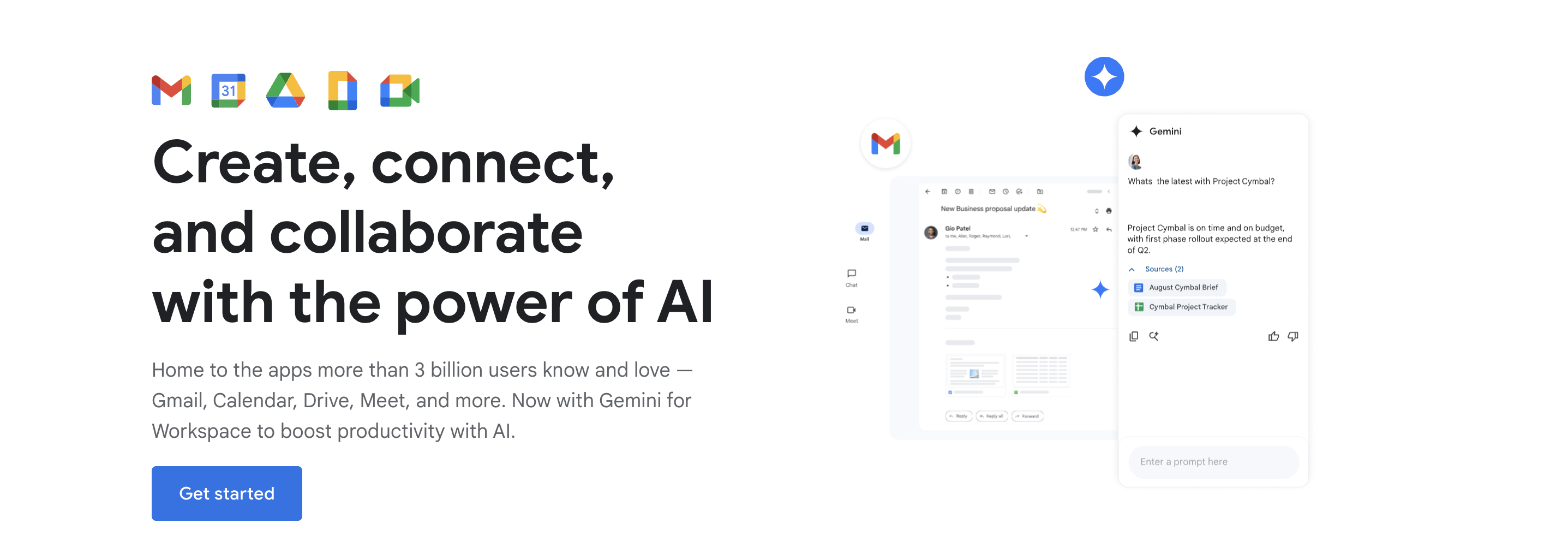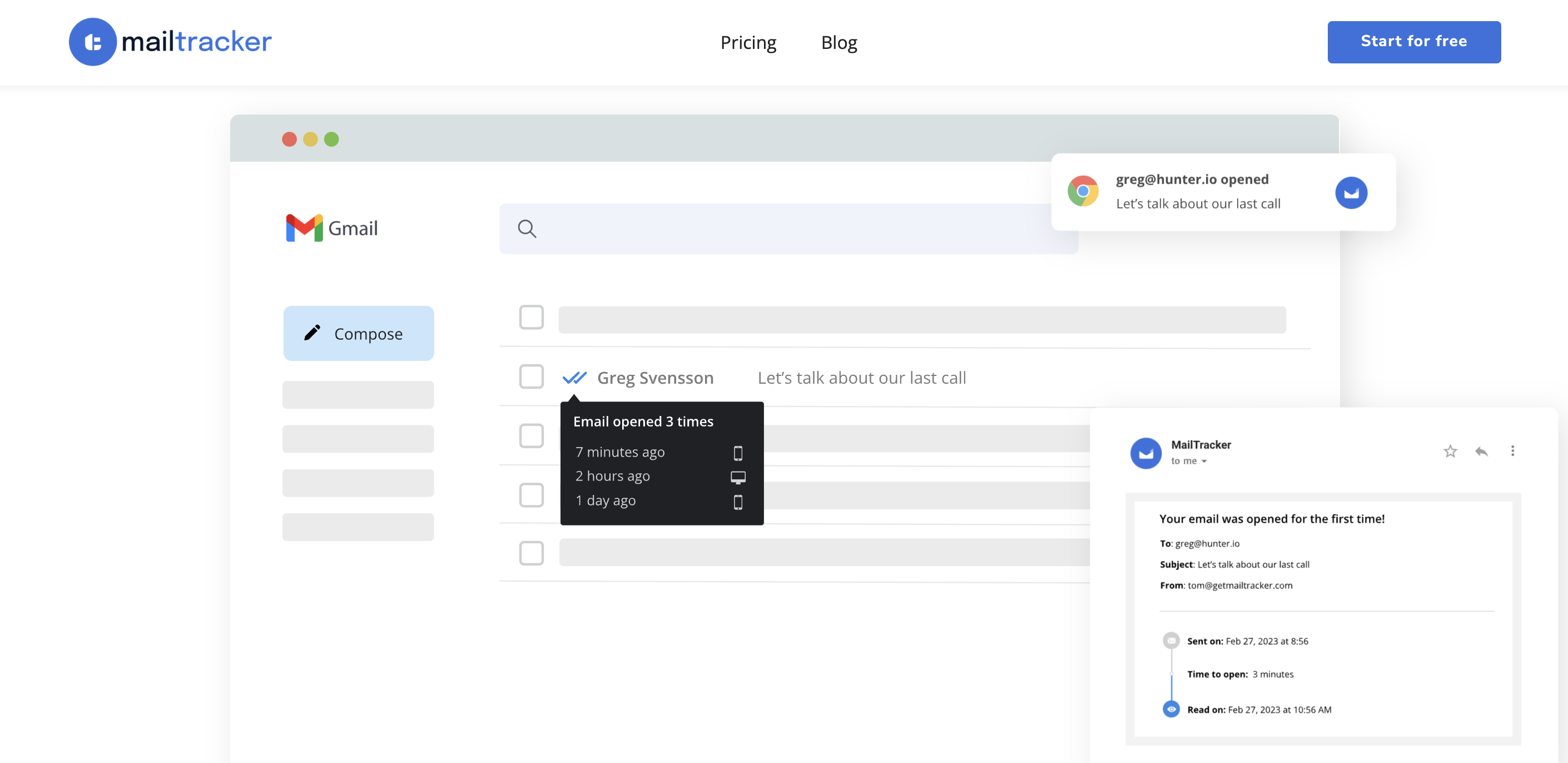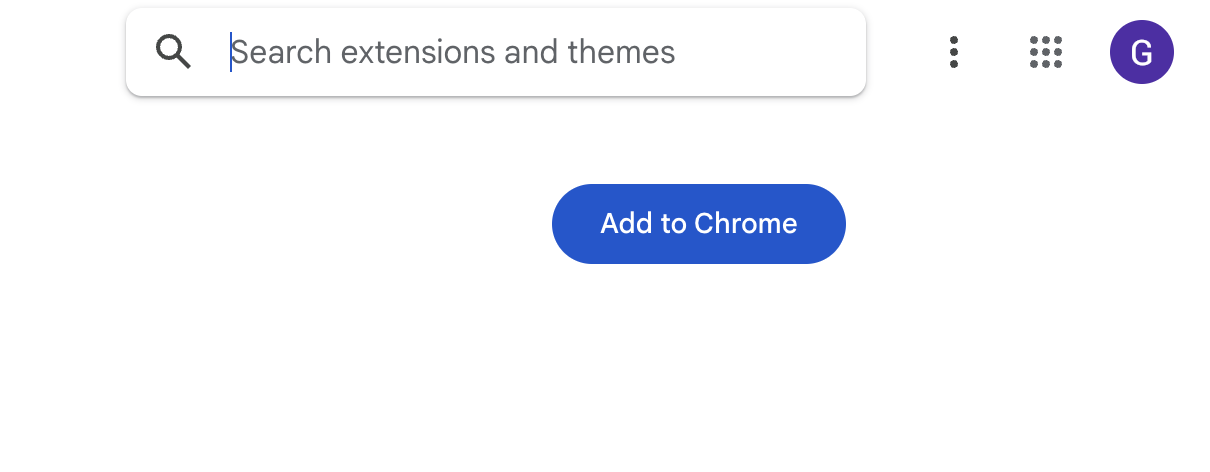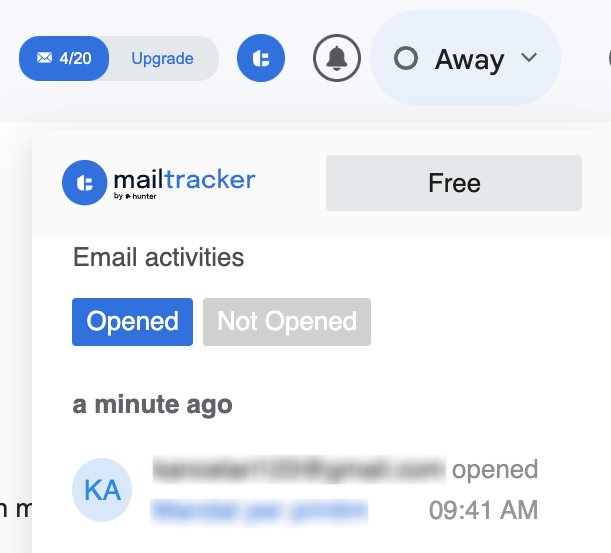Whether you're following up on a business proposal or checking in on a project update, knowing if someone read your email in Gmail can be crucial to your email strategy.
While Gmail offers some built-in features, they may not provide the comprehensive tracking that many need. This is where MailTracker comes into play.
MailTracker is a powerful tool that allows you to track email opens without requiring any action from the recipient.
Add MailTracker to Chrome for free, and you can gain valuable insights into whether your emails have been read, which will help you make informed decisions about follow-ups and communication strategies.
In this article, we will explore four methods, including MailTracker, to effectively determine how to see if someone read your email in Gmail.
How to See if Someone Read Your Email in Gmail?
There are several methods to determine if someone has read your email in Gmail, each with its own advantages and limitations.
Understanding these methods can help you enhance your communication strategy, whether for personal use or in a professional context.
Method 1: Gmail Read Receipts
Gmail read receipts are a feature designed to notify senders when the recipient has opened their emails. This functionality is particularly useful in professional settings where timely communication is important.
However, it is important to note that read receipts are only available for Google Workspace accounts, which cater to businesses, educational institutions, and government entities. Personal Gmail accounts do not have access to this feature.
When a sender requests a read receipt, the recipient receives a prompt asking whether they would like to send a confirmation back to the sender upon opening the email.
This system is not automatic; it relies on the recipient's consent (recipient approval) to send the read receipt. If the recipient declines the request, the sender will not receive any confirmation, leaving them uncertain about whether the email was read.
To activate read receipts in Gmail for your organization, follow these steps:
Step 1. Navigate to User Settings on Desktop or Gmail Mobile App: Go to Apps > Google Workspace > Gmail > User settings.

Step 2. Select Email Read Receipts: In the Email Read Receipts section, you will find options to manage read receipts. You can choose from:
- Disable all read receipts for Google Workspace users.
- Allow all users to send read receipts within the organization and to specified external addresses.
- Allow read receipts to be sent to any email address.
Step 3. Save Settings: After selecting the appropriate option, save your changes. Now that the read receipt is activated, you can request it when composing emails in Gmail.
Step 4. Log into your Google Workspace account: Access your Gmail through a web browser on your desktop.
Step 5. Compose a new email: Click on the Compose button to start a new message.
Step 6. Draft your message: Write your email as you normally would, including the recipient’s email address and subject line.
Step 7. Open the three-dot menu: In the compose window, look for the three vertical dots in the bottom right corner.
Step 8. Select "Read Receipt Request": Click on the three-dot menu and choose Request read receipt from the dropdown options.
Step 9. Send your email: Once you have requested the read receipt, click the Send button to deliver your message.
Limitations Using Gmail Read Receipts Method
While read receipts can improve accountability and improve communication by confirming that important messages have been seen, they also come with limitations.
For example, if the recipient opens the email on a mobile app, they may not receive the prompt to send a read receipt, resulting in a lack of notification for the sender.
Additionally, privacy concerns may lead some recipients to avoid sending read receipts altogether, making it an unsuitable solution for tracking email engagement.
Method 2: Third-Party Email Trackers

Third-party email tracking software offers a robust solution for individuals and businesses seeking to monitor email engagement beyond what standard email clients provide.
These tools typically integrate with popular email platforms like Gmail, Outlook, and others, allowing users to track when their emails are opened, how many times they are viewed, and also link tracking.
By using tracking pixels or unique links, these tools gather data that can help users understand recipient behavior.
One of the advantages of using third-party tools is the level of detail they provide. Users can access analytics dashboards that display metrics such as open rates, click-through rates, and engagement over time.
This information can be invaluable for refining email marketing strategies and improving overall communication effectiveness.
Also, many of these email automation tools offer features like automated follow-up reminders, which can help users stay organized and ensure they engage with recipients promptly.
What are the Limitations of Using Third-Party Email Trackers?
However, using these tools may also come with limitations. First, accuracy issues can arise since many email clients block tracking pixels or images by default.
This can lead to underreporting of email opens and clicks, as the tracking mechanism relies on these elements being loaded.
Second, recipients may feel their privacy is invaded if they are tracked without consent, which can damage trust and relationships.
Lastly, some of these email tracking tools can become expensive, and it may take time to learn the software.
If you are looking for a free email tracker that is privacy-focused and has a very friendly interface, then look no further than MailTracker. Add now MailTracker to Chrome.
Method 3: HTML Image Tracking
HTML image tracking is a method used to determine whether an email has been opened by the recipient.
This technique relies on embedding a small, invisible image, often referred to as a tracking pixel, within the body of the email.
When the recipient opens the email, their email client automatically requests the image from the server where it is hosted. This request serves as a signal that the email has been viewed, allowing the sender to receive a notification.
The process begins when the sender creates an email and includes an HTML image tag that points to a specific image hosted on a server. The image is typically very small—often just 1x1 pixel—and is designed to be invisible to the recipient.
Once the email is sent, the tracking pixel remains dormant until the recipient opens the email. At that moment, the email client fetches the image from the server, which logs the request, thereby confirming that the email has been opened.
Limitations on Using HTML Image Tracking
While HTML image tracking can provide valuable insights into email engagement, it comes with various limitations.
Many email clients, including popular ones like Gmail and Outlook, have settings that block automatic image loading by default.
This means that if the recipient has not enabled images, the tracking pixel will not load, and the sender will not receive a notification.
Additionally, some users may have privacy concerns regarding tracking pixels, leading them to disable image loading altogether.
Another consideration is that HTML image tracking does not provide information about how long the email was viewed or whether the content was actually read. It simply confirms that the email was opened.
Method 4: Delivery Confirmation
Delivery confirmation is a feature that allows senders to verify their emails have successfully reached the recipient's email server.
Unlike read receipts, which indicate if an email has been opened, delivery confirmation focuses solely on the successful transmission of the email.
When a sender requests a delivery confirmation, the email server generates a notification once the email has been successfully delivered to the recipient's inbox.
This confirmation typically includes the date and time of delivery, providing the sender with peace of mind that their message has arrived.
Limitations on Using Delivery Confirmation
However, it is important to note that delivery confirmation does not guarantee that the recipient has seen or read the email.
The recipient may not check their inbox immediately or may overlook the message entirely.
Also, delivery confirmations can be affected by various factors, such as spam filters or server issues, which may prevent the email from reaching the intended recipient.
While delivery confirmation is a helpful tool for tracking emails, it should be used along with other methods, such as follow-up emails or tracking tools, to gain a comprehensive understanding of email engagement and recipient interaction.
Why Should You Use MailTracker to See if Someone Read Your Email in Gmail?
MailTracker, developed by Hunter, is a free email tracking extension for Chrome designed specifically for Gmail users.
This tool allows senders to know in real-time when their emails have been opened, improving communication efficiency, especially in professional environments.
MailTracker operates by embedding an invisible one-pixel image in the email. When the recipient opens the email, this image is loaded from the server, triggering a notification to the sender that the email has been opened.
Using MailTracker for Gmail provides numerous advantages for freelancers and businesses looking to monitor email engagement effectively.
Real-Time Notifications
One of the primary benefits is real-time notifications. With MailTracker, users receive instant alerts when their emails are opened, allowing for timely follow-ups.
This feature is particularly useful in sales and marketing contexts, where understanding recipient behavior can greatly influence engagement strategies.
By knowing exactly when an email has been read, users can tailor their follow-up messages based on the recipient's actions, increasing the likelihood of a response.
User-Friendly Integration
Another advantage of MailTracker is its user-friendly integration with Gmail. The extension is easy to install and integrates into the Gmail interface, allowing users to track emails without needing to switch between different applications.
This convenience enhances productivity, as users can manage their email tracking directly from their inbox.
Also, MailTracker does not add any visible signatures or watermarks to the tracked emails, ensuring that recipients remain unaware of the tracking, which helps maintain a professional appearance.
Privacy Considerations
Privacy is an important aspect of using MailTracker. The tool is designed with a focus on user privacy, adhering to regulations like the General Data Protection Regulation (GDPR).
MailTracker does not collect personal data from recipients, such as IP addresses or identifying information.
Instead, it uses thread-level tracking, meaning it tracks email engagement without compromising individual privacy.
Valuable Insights
MailTracker also offers valuable insights into email performance. Users can analyze which subject lines and content lead to higher open rates, enabling them to optimize future communications.
This data-driven approach allows for more effective email campaigns and can lead to improved overall engagement.
Also, MailTracker supports tracking multiple Gmail accounts, making it suitable for bulk email campaigns.
Users can monitor individual interactions, identifying which recipients are most engaged and tailoring their outreach accordingly.
How to Install MailTracker to Your Gmail?
Here’s how to track emails in Gmail with MailTracker. Follow these simple steps:
1. Install the Extension:
- Open the Chrome browser and visit the MailTracker website at getmailtracker.com
- Click the “Add to Chrome” button to install the extension.

- Confirm the installation by clicking “Add extension” in the pop-up window.

2. Sign In:
- After installation, click on the MailTracker icon in the Chrome toolbar.
- Sign in using your Google account to link MailTracker with your Gmail.
3. Compose an Email:
- Open Gmail and click on the Compose button to create a new email.

- Write your email as you normally would, including the recipient’s email address and subject line.
4. Enable Tracking:
- Look for the MailTracker icon in the compose window. Ensure it is activated (usually indicated by a colored icon).
- If you want to disable tracking for a specific email, simply toggle the icon off.
5. Send Your Email:
- Once you have completed your email and enabled tracking, click the Send button.
6. Monitor Email Opens:
- After sending the email, you can check the status in your Gmail Sent folder.
- Hover over the sent email to view tracking details provided by MailTracker.

7. Receive Real-Time Notifications:
- You will receive real-time alerts via email whenever the emails you send are opened, allowing for timely follow-ups.
Manage Your Multiple Gmail Accounts with MailTracker
Knowing whether someone has read your email in Gmail is important for optimizing communication. While Gmail offers some native options like read receipts, these are often limited in functionality and availability.
For more reliable tracking, MailTracker provides a robust and user-friendly solution, offering real-time notifications without requiring any action from the recipient.
To improve your email communication and ensure timely follow-ups, try MailTracker today. It's easy to install, integrates seamlessly with Gmail, and provides valuable insights to improve your outreach.
Get MailTracker for free and start tracking your emails effectively!


